- Home
- Computer Peripherals
- Monitor
- Gaming Monitor
Gaming Monitor
- In Stock
- Sold by Newegg
- Make an Offer
- New
- Brands
- Show More
- Price
- Show More
- Screen Size
- Resolution
- Refresh Rate
- Panel
- Show More
- Adaptive Sync Technology
- Show More
- Curved Surface Screen
- VESA Compatibility - Mountable
- Stand Adjustments
- Show More
- Response Time
- Show More
- Video Ports
- Show More
- DisplayPort
- Show More
- HDMI
- Show More
- Display Colors
- Show More
- Aspect Ratio
- Built-in Webcam
- Built-in Speakers
- Show More
- USB Ports
- Monitor Pixel Density
- Show More
- VESA Certified DisplayHDR
- All Top Brands
- Availability
- Condition
- Current Promotion
- Discount
- Sold by
- Useful Links
- New
Show More
- Customer Ratings
- & up
SHOP BY Screen Size
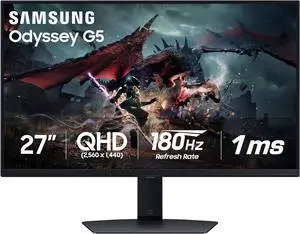
promotional gift card w/ purchase, limited offer
- Screen Size: 27"
- Refresh Rate: 180 Hz
- Resolution: 2560 x 1440 (2K)
- Response Time: 1ms (GTG)
- Model #: LS27DG500ENXZA
- $349.99
- $229.99 –
- Save: 34%
- Free Shipping
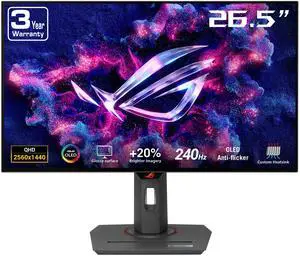
- Screen Size: 27"
- Refresh Rate: 240 Hz
- Resolution: 2560 x 1440 (2K)
- Response Time: 0.03 ms (GTG)
- Model #: XG27AQDMGZ
- $524.99 –
- More options from $524.99 - $699.99
- Free Shipping
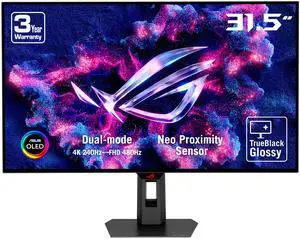
- Screen Size: 32"
- Refresh Rate: 240 Hz
- Resolution: 3840 x 2160 (4K)
- Response Time: 0.03 ms(GTG)
- Model #: XG32UCWMG
- $1,099.99 –
- More options from $1,099.99 - $1,426.65
- Free Shipping
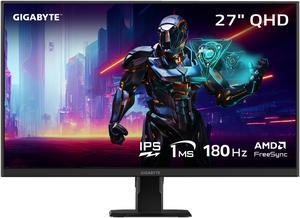
- Screen Size: 27"
- Refresh Rate: 180 Hz
- Resolution: 2560 x 1440 (2K)
- Response Time: 1ms (MPRT)
- Model #: GS27QA SA1
- $249.99
- $179.99 –
- Save: 28%
- More options from $159.00 - $339.29
- Free Shipping
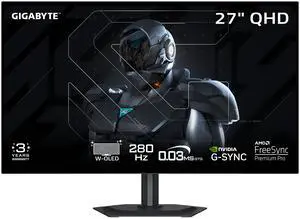
- Screen Size: 27"
- Refresh Rate: 280 Hz
- Resolution: 2560 x 1440 (2K)
- Response Time: 0.03 ms (GTG)
- Model #: MO27Q28G SA1
- $599.99 –
- Free Shipping

promotional gift card w/ purchase, limited offer
- Screen Size: 27"
- Refresh Rate: 180 Hz
- Resolution: 2560 x 1440 (2K)
- Response Time: 1ms (GTG)
- Model #: LS27DG500ENXZA
- $349.99
- $229.99 –
- Save: 34%
- Free Shipping

- Screen Size: 27"
- Refresh Rate: 144Hz UHD / 288Hz FHD
- Resolution: 3840 x 2160 (4K)
- Response Time: 1 ms
- Model #: MAG 275UPD E14
- $279.99
- $239.95 –
- Save: 14%
- More options from $239.95 - $378.92
- Free Shipping
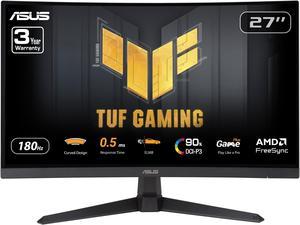
- Screen Size: 27"
- Refresh Rate: 180 Hz
- Resolution: 2560 x 1440 (2K)
- Response Time: 1ms(GTG), 0.5ms(min.)
- Model #: 90LM0AQ1-B011B0
- $239.99
- $179.99 –
- Save: 25%
- More options from $179.99 - $436.44
- Free Shipping
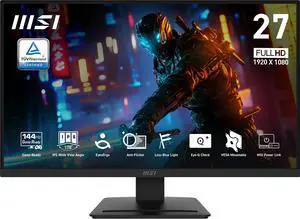
- Screen Size: 27"
- Refresh Rate: 144 Hz
- Resolution: 1920 x 1080
- Response Time: 1ms (MPRT) / 4ms (GTG)
- Model #: PRO MP273L E14
- $129.99
- $104.99 –
- Save: 19%
- More options from $103.88 - $172.43
- Free Shipping
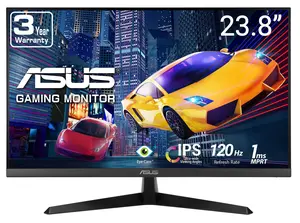
- Screen Size: 24"
- Refresh Rate: 120 Hz
- Resolution: 1920 x 1080
- Response Time: 1 ms (MPRT)
- Model #: 90LM06A3-B02AB0
- $119.99
- $89.99 –
- Save: 25%
- More options from $89.99 - $237.44
- Free Shipping
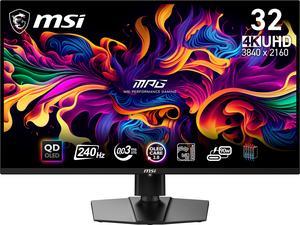
- Screen Size: 32"
- Refresh Rate: 240 Hz
- Resolution: 3840 x 2160 (4K)
- Response Time: 0.03 ms
- Model #: MPG 321URX QD-OLED
- $940.95 –
- More options from $899.00 - $1,268.26
- Free Shipping

- Screen Size: 24" (23.8" actual screen size)
- Refresh Rate: 180 Hz
- Resolution: 1920 x 1080
- Response Time: 2ms (G to G) - Up to 0.5ms (G to G)
- Model #: UM.QX1AA.305
- $129.99
- $94.99 –
- Save: 26%
- More options from $94.99 - $159.99
- Free Shipping
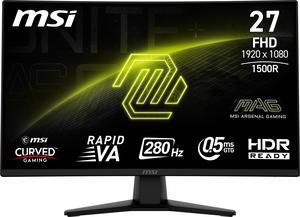
- Screen Size: 27"
- Refresh Rate: 280 Hz
- Resolution: 1920 x 1080
- Response Time: 0.5ms (GtG, Min.)
- Model #: MAG 274CXF
- $179.99
- $149.99 –
- Save: 16%
- More options from $149.99 - $249.95
- Free Shipping
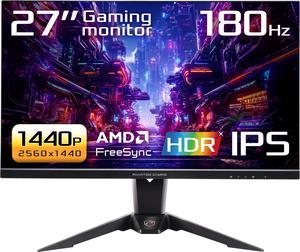
- Screen Size: 27"
- Refresh Rate: 180 Hz
- Resolution: 2560 x 1440 (2K)
- Response Time: 1ms (MPRT), 5ms (GtG)
- Model #: PG27QFT2A
- $209.99
- $154.77 –
- Save: 26%
- Free Shipping

- Screen Size: 27"
- Refresh Rate: 400 Hz
- Resolution: 2560 x 1440 (2K)
- Response Time: 1ms (G to G) - Up to 0.5ms (G to G)
- Model #: UM.HX0AA.402
- $449.99
- $319.99 –
- Save: 28%
- More options from $319.99 - $321.33
- Free Shipping
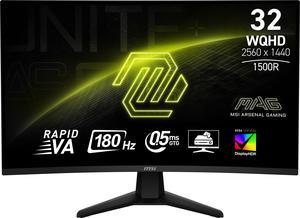
off w/ promo code NYNTF424, limited offer
- Screen Size: 32"
- Refresh Rate: 180 Hz
- Resolution: 2560 x 1440 (2K)
- Response Time: 0.5ms (GtG, Min.)
- Model #: 9S6-3DC91M-004
- $249.99
- $229.99 –
- Save: 8%
- More options from $215.88 - $500.44
- Free Shipping
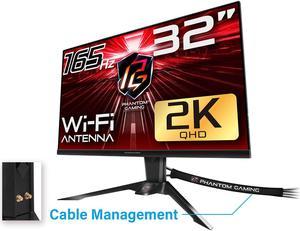
- Screen Size: 32"
- Refresh Rate: 165 Hz
- Resolution: 2560 x 1440 (2K)
- Response Time: 1 ms
- Model #: PG32QF2B
- $269.99
- $199.99 –
- Save: 25%
- Free Shipping
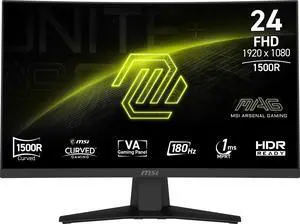
- Screen Size: 24" (23.6" Viewable)
- Refresh Rate: 180 Hz
- Resolution: 1920 x 1080
- Response Time: 1ms (MPRT) / 4ms (GTG)
- Model #: MAG 244C
- $119.99
- $109.99 –
- Save: 8%
- More options from $109.99 - $184.02
- Free Shipping
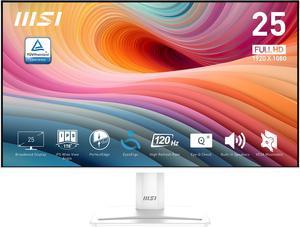
- Screen Size: 24.5"
- Refresh Rate: 120 Hz
- Resolution: 1920 x 1080
- Response Time: 1ms (MPRT) / 4ms (GTG)
- Model #: PRO MP251W E2
- $119.99
- $99.99 –
- Save: 16%
- More options from $99.99 - $220.72
- Free Shipping
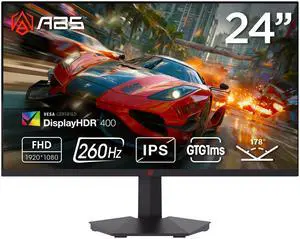
- Screen Size: 23.8"
- Refresh Rate: 260 Hz
- Resolution: 1920 x 1080
- Response Time: 1 ms
- Model #: GF241NE
- $119.99
- $99.99 –
- Save: 16%
- Free Shipping
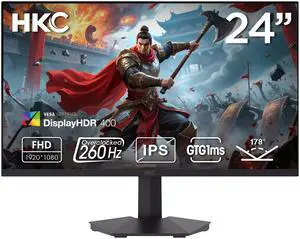
- Screen Size: 23.8"
- Refresh Rate: 260 Hz
- Resolution: 1920 x 1080
- Response Time: 1 ms(MPRT)
- Model #: G24H3D
- $114.99 –
- Free Shipping
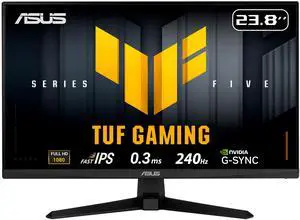
- Screen Size: 23.8"
- Refresh Rate: 240 Hz
- Resolution: 1920 x 1080
- Response Time: 1ms(GTG), 0.3ms(min.)
- Model #: VG249QM5A
- $169.99
- $129.99 –
- Save: 23%
- Free Shipping
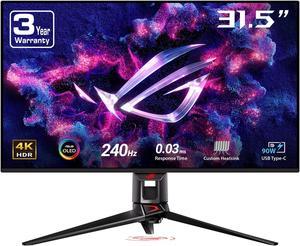
- Screen Size: 32"
- Refresh Rate: 240 Hz
- Resolution: 3840 x 2160 (4K)
- Response Time: 0.03 ms
- Model #: PG32UCDM
- $1,299.99
- $999.00 –
- Save: 23%
- More options from $949.99 - $2,650.44
- Free Shipping
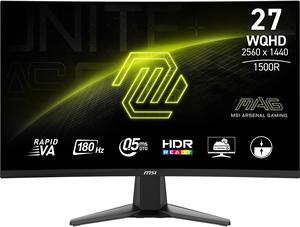
- Screen Size: 27"
- Refresh Rate: 180 Hz
- Resolution: 2560 x 1440 (2K)
- Response Time: 0.5ms (GtG, Min.)
- Model #: MAG 27CQ6F
- $199.99
- $179.99 –
- Save: 10%
- More options from $179.99 - $282.68
- Free Shipping
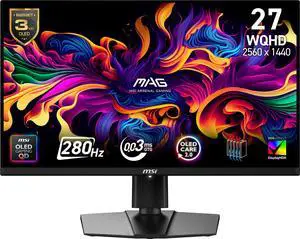
- Screen Size: 27"
- Refresh Rate: 280 Hz
- Resolution: 2560 x 1440 (2K)
- Response Time: 0.03 ms
- Model #: MAG 271QP QD-OLED X28
- $549.99 –
- More options from $549.99 - $761.83
- Free Shipping
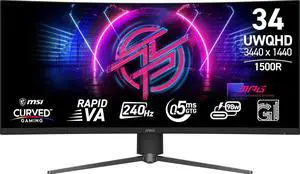
- Screen Size: 34"
- Refresh Rate: 240 Hz
- Resolution: 3440 x 1440
- Response Time: 0.50 ms
- Model #: MPG 346CQRF X24
- $379.99 –
- More options from $379.99 - $462.69
- Free Shipping
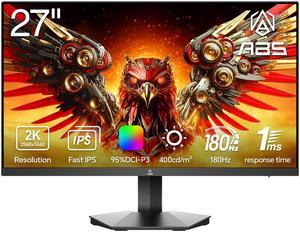
- Screen Size: 27"
- Refresh Rate: 180 Hz
- Resolution: 2560 x 1440 (2K)
- Response Time: 2ms GTG, 1ms DIC
- Model #: GQ271NE
- $249.99
- $139.99 –
- Save: 44%
- Free Shipping

- Screen Size: 27"
- Refresh Rate: 180 Hz
- Resolution: 2560 x 1440 (2K)
- Response Time: 1ms (MPRT)
- Model #: PG27QRT1B
- $195.99
- $139.99 –
- Save: 28%
- Free Shipping

- Screen Size: 27"
- Refresh Rate: 160 Hz
- Resolution: 3840 x 2160 (4K)
- Response Time: 1 ms
- Model #: GS27U SA1
- $349.99
- $299.99 –
- Save: 14%
- More options from $299.99 - $470.00
- Free Shipping
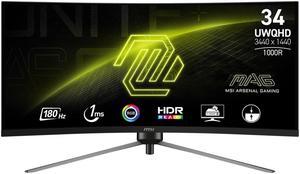
off w/ promo code NYNTF423, limited offer
- Screen Size: 34"
- Refresh Rate: 180 Hz
- Resolution: 3440 x 1440 (2K)
- Response Time: 1ms (MPRT)
- Model #: MAG345CQR
- $339.99 –
- More options from $339.99 - $677.44
- Free Shipping
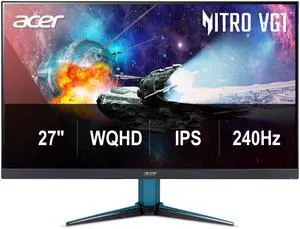
- Screen Size: 27"
- Refresh Rate: 144Hz Using HDMI Port 240Hz Using Display Port
- Resolution: 2560 x 1440 (2K)
- Response Time: Up to 0.5ms
- Model #: UM.HV2AA.201
- $299.99
- $229.99 –
- Save: 23%
- More options from $224.99 - $464.50
- Free Shipping

- Screen Size: 27"
- Refresh Rate: 320 Hz
- Resolution: 2560 x 1440 (2K)
- Response Time: 0.50 ms
- Model #: MAG 274QRFW X32
- $299.99 –
- More options from $299.99 - $368.39
- Free Shipping

- Screen Size: 27"
- Refresh Rate: 240 Hz
- Resolution: 2560 x 1440 (2K)
- Response Time: 1ms (GtG at Faster)
- Model #: 27GR83Q-B
- $499.00
- $279.00 –
- Save: 44%
- More options from $279.00 - $518.91
- Free Shipping
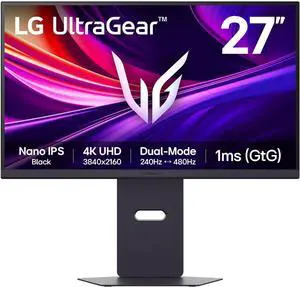
- Screen Size: 27"
- Refresh Rate: 240 Hz
- Resolution: 3840 x 2160 (4K)
- Response Time: 1ms (GtG at Faster)
- Model #: 27G850A-B
- $899.99
- $599.99 –
- Save: 33%
- More options from $596.99 - $896.99
- Free Shipping
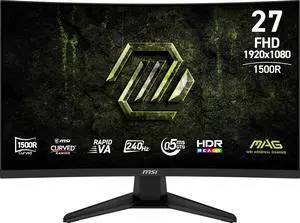
- Screen Size: 27"
- Refresh Rate: 240 Hz
- Resolution: 1920 x 1080
- Response Time: 0.50 ms
- Model #: MAG 275CF X24
- $159.99 –
- More options from $159.99 - $204.27
- Free Shipping
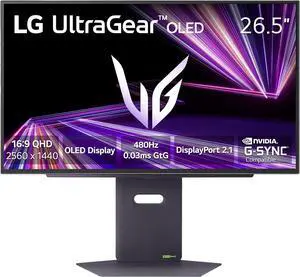
- Screen Size: 27"
- Refresh Rate: 480 Hz
- Resolution: 2560 x 1440 (2K)
- Response Time: 0.03ms (GtG)
- Model #: 27GX790A-B
- $746.99 –
- More options from $746.99 - $1,597.49
- Free Shipping
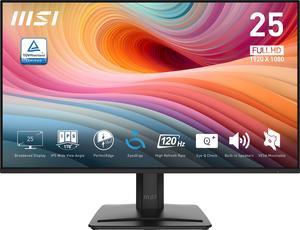
- Screen Size: 24.5"
- Refresh Rate: 120 Hz
- Resolution: 1920 x 1080
- Response Time: 1ms (MPRT) / 4ms (GTG)
- Model #: PRO MP251 E2
- $109.99 –
- More options from $92.44 - $174.00
- Free Shipping
Find Your Perfect Gaming Monitor
Elevate Your Gaming Experience: The Monitor Matters
Your gaming monitor isn't just a screen—it's your window into virtual worlds. Whether you're dodging bullets in competitive shooters or getting lost in cinematic RPGs, the right display can make all the difference. Let's break down what really matters when choosing your gaming monitor.
Read our complete step-by-step walkthrough here: How to choose the right gaming monitor in 2025.
Size: Find Your Sweet Spot
Bigger isn't always better when it comes to gaming monitors. Here's what works best:
- 24-27 inches: The esports sweet spot. Smaller screens keep everything in your field of view for faster reactions.
- 32+ inches: Perfect for immersive single-player games where you want to soak in every detail.
- Ultrawide (34+ inches): Curved screens that wrap around your vision for next-level immersion.
Pro tip: Measure your desk space first—you don't want a monitor that overwhelms your setup!
Resolution & Refresh Rate: The Speed vs. Clarity Balance
These two specs work together to create buttery-smooth gameplay:
- Resolution:
- 1080p(Full HD): 1920 X 1080 pixel, still great for competitive gaming and budget builds, offering a good between quality and performance.
- 1440p(QHD): 2560 x 1440 pixels, The sweet spot for most gamers—sharp visuals without crushing your GPUs
- 4K(UHD): 840 x 2880 pixels,Stunning detail and clarity, but only if your graphics card can handle it,suitable for gaming, video editing, and multitasking
- 5K(WUHD): 512 x 2880 pixels, a premium resolution for large, high-end monitors, offering even great detail and clarity
- Refresh Rate:
- 60Hz or 75Hz: It might be sufficient for casual gamers and can offer a more comfortable experience for tasks like scrolling and working with spreadsheets
- 144Hz: The baseline for serious gaming—everything feels smoother
- 240Hz+: For esports pros who need every competitive edge
Remember: A high refresh rate means nothing if your GPU can't keep up!
Response Time: Speed in Every Frame
Monitor response time refers to how quickly a monitor can change the color of a pixel, measured in milliseconds (ms).
- Lower is Better: A lower response time means the monitor can switch colors faster, resulting in smoother visuals—especially during fast-paced action and gaming.
- Gaming: In competitive gaming, a lower response time reduces motion blur and ghosting (where motion trails follow fast-moving objects), creating a more responsive and immersive experience.
- General Use: For tasks like browsing or streaming, a response time below 5ms is usually sufficient, as most users won’t notice the difference between 1ms and 5ms.
- 1ms Response Time: Ideal for high-speed gaming, a 1ms response time ensures pixel transitions are nearly instantaneous.
- Real-World Performance: Manufacturer specs may exaggerate performance—refer to third-party reviews for accurate results.
- 0.03ms Response Time: Seen in premium OLED and QD-OLED monitors, this ultra-fast response delivers near-instant pixel changes for the smoothest motion clarity.
Editor’s Picks: Recommended Gaming Monitors
27" QHD QD-OLED with up to 500Hz refresh and 0.03ms (GtG), FreeSync Premium/G-Sync Compatible, and a glare-free finish for clear, fast action.
Samsung Odyssey OLED G6 — 27" QHD, up to 500Hz, 0.03ms, FreeSync Premium & G-Sync Compatible32" 4K WOLED with 240Hz (dual mode: FHD 480Hz) and 0.03ms (GtG), FreeSync Premium Pro/G-Sync Compatible, TrueBlack Glossy zero-haze panel, OLED Care Pro, plus DP 1.4 (DSC), HDMI 2.1, and USB-C 15W.
ASUS ROG Strix OLED XG32UCWMG — 32" 4K, 240Hz/480Hz dual mode, 0.03ms, FreeSync Premium Pro & G-Sync CompatiblePanel Technology: Choose Your Strength
Different panel types excel at different things:
- IPS (In-Plane Switching): Gorgeous colors and wide viewing angles—perfect for visually stunning games.
- TN (Twisted Nematic): Lightning-fast response times (1ms), ideal for competitive gaming.
- VA (Vertical Alignment): Deep blacks and high contrast—offering a balanced experience for gaming and media.
- OLED (Organic Light Emitting Diode): Delivers true blacks by turning off individual pixels. Known for high contrast, wide viewing angles, and ultra-fast response times.
- QD-OLED (Quantum Dot OLED): Combines OLED with a quantum dot layer to enhance brightness and color vibrancy—great for immersive visuals.
- W-OLED (White OLED): Uses a white light-emitting layer and an extra white subpixel for improved brightness efficiency and accurate color reproduction.
Game-Changing Features
These technologies can take your gaming to the next level:
Adaptive Sync (G-Sync/FreeSync)
No more screen tearing or stuttering! These technologies sync your monitor's refresh rate with your GPU's output for perfectly smooth gameplay.
HDR & Advanced Display Tech
For visuals that pop:
- HDR: Makes colors more vibrant and lifelike
- OLED/QLED: Incredible contrast with perfect blacks
- Curved Screens: Wrap around your vision for deeper immersion
Built-in Crosshair Features
Many modern gaming monitors now include built-in crosshair overlays—ideal for first-person shooters like Counter-Strike 2, Valorant, Apex Legends, or Overwatch 2. These features can enhance accuracy by helping you line up shots more effectively, giving you a competitive edge without relying on in-game settings.
FAQs about Gaming PCs
-
Is 27 inches too big for competitive gaming?
Not necessarily! It depends on your viewing distance. Just don't go so big that you have to move your head to see the edges. -
Do I need 4K for gaming?
Only if your GPU can handle it. For most gamers, 1440p offers the best balance of visual quality and performance. -
What's more important: refresh rate or response time?
Both matter! Refresh rate (Hz) determines how smooth motion looks, while response time (ms) affects motion clarity. Look for at least 144Hz and 1ms for competitive gaming.
Bestselling Gaming Monitor Reviews:
“ This is my first ever gaming monitor and for the price, it seems too good to be true. ”
ASRock Phantom PG27F15RS1A 27" FHD 1920 x 1080 240 Hz (144Hz and higher) Adaptive Sync Built-in Speakers Curved Gaming Monitor“ It's definitely the end-game gaming monitor as of June 2025. ”
ASUS 27" (26.5" Viewable) 240 Hz OLED UHD Gaming Monitor FreeSync Premium Pro & G-Sync Compatible DCI-P3 99%, sRGB 145% ROG Swift OLED PG27UCDM“ this is my first ever oled gaming monitor I have purchased and I can say its worth every penny and hours I worked hard to get this monitor! ”
ASUS 27" (26.5" Viewable) 240 Hz OLED UHD Gaming Monitor FreeSync Premium Pro & G-Sync Compatible DCI-P3 99%, sRGB 145% ROG Swift OLED PG27UCDM“ a very good gaming competitive monitor . ”
AORUS FO32U2 Pro 32" QD OLED 4K UHD 3840 x 2160 240Hz 0.03ms GTG AMD FreeSync Premium Pro, USB-C, KVM, HDMI 2.1, Display Port 2.1, Height Adjustable Gaming Monitor“ But compared to normal led gaming monitors it is a lot better. ”
MSI 49" 240 Hz OLED DQHD Gaming Monitor Adaptive Sync MPG 491CQPX QD-OLED“ Best gaming monitor hands down! ”
ASUS 27" (26.5" Viewable) 240 Hz OLED UHD Gaming Monitor FreeSync Premium Pro & G-Sync Compatible DCI-P3 99%, sRGB 145% ROG Swift OLED PG27UCDM“ This product was mentioned on at least one YouTube channel I watch as a great overall gaming monitor, and I agree after using it for a few weeks. ”
MSI 27" 160 Hz Rapid IPS UHD Gaming Monitor FreeSync (AMD Adaptive Sync) MAG 274UPF E2“ The MSI MPG 321URX QD-OLED is about as close to perfection as gaming monitors get. ”
MSI 32" 240 Hz OLED UHD Gaming Monitor Adaptive Sync MPG 321URXW QD-OLED












